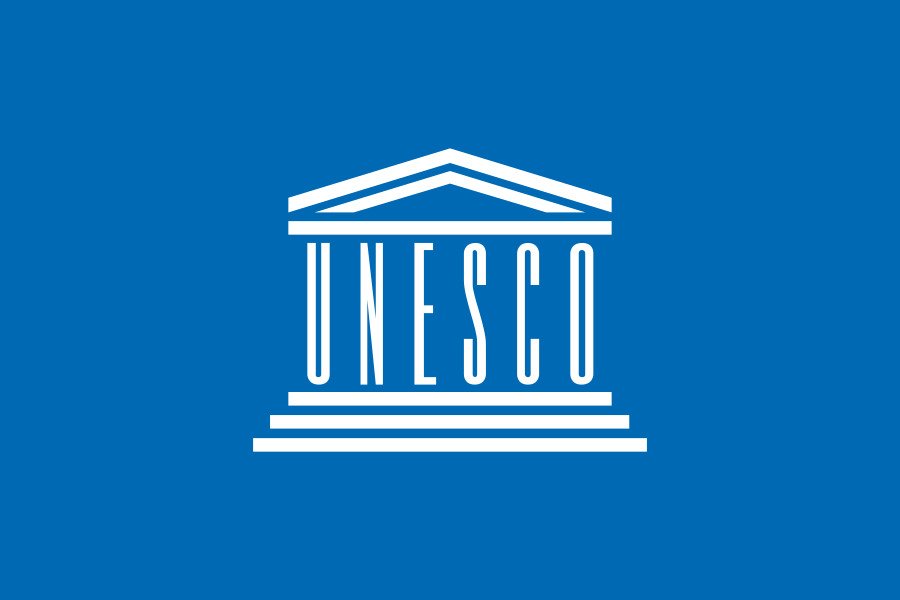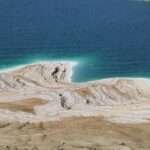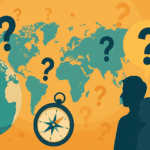UNESCO is a UN agency founded on 16 November 1945 (constitution in force since 4 November 1946) to promote peace through education, science, culture, and communication. As of 2025 it has 194 Member States and 12 Associate Members, a Paris headquarters, and global programmes such as World Heritage, biosphere reserves, and the Global Education Monitoring (GEM) Report.
UNESCO in Brief: Mandate, Structure, and How It Works
UNESCO’s mandate is defined by its Constitution, which entrusts it to foster collaboration among nations in education, natural and social sciences, culture, and communication to uphold human rights and peace. This mission is delivered through standard-setting (conventions and recommendations), global monitoring and data, capacity-building, and on-the-ground projects led by field offices and partner networks.
The Organization is structured around three main organs. The General Conference (meets every two years) sets policies and the programme, adopts the budget, and appoints the Director-General. The 58-member Executive Board provides strategic oversight between sessions. The Secretariat, led by the Director-General, implements decisions with specialized sectors (Education; Culture; Natural Sciences; Social and Human Sciences; Communication & Information) and cross-cutting priorities (Gender Equality and Africa). As of September 2025, Audrey Azoulay continues as Director-General pending the 43rd General Conference (30 Oct–13 Nov 2025).
Where UNESCO Works, Languages & Membership
UNESCO’s headquarters sit at 7 Place de Fontenoy, 75007 Paris (48.8497° N, 2.3064° E), at roughly 131 ft (40 m) above sea level. Working languages align with the UN’s six official languages: Arabic, Chinese, English, French, Russian, and Spanish. As of 2025, UNESCO counts 194 Member States and 12 Associate Members; the official list also notes certain non-members and observers. For authoritative membership details and country notes, see UNESCO’s Member States page.
| Metric | Value (as of 2025 unless noted) |
|---|---|
| Constitution adopted / in force | 16 Nov 1945 / 4 Nov 1946 |
| Headquarters | 7 Place de Fontenoy, Paris (48.8497° N, 2.3064° E), ~131 ft (40 m) elevation |
| Member States / Associate Members | 194 / 12 |
| Executive Board seats | 58 |
| World Heritage properties | 1,248 in 170 States Parties to the 1972 Convention (as of 17 July 2025) |
| Biosphere Reserves (MAB) | 785 sites in 142 countries (September 2025) |
| Memory of the World Register | 570 documentary heritage inscriptions (April 2025) |
| Regular Budget 2024–2025 | US$ 685.4 million (biennium) |
| Official working languages | Arabic, Chinese, English, French, Russian, Spanish |
| Global priorities | Africa; Gender Equality |
A Short History of UNESCO (1945–2025)
UNESCO emerged from wartime planning conferences—leaders believed lasting peace needed more than treaties; it required education, scientific cooperation, cultural understanding, and free flow of ideas. The Constitution was signed in London by 37 countries in 1945 and entered into force in 1946 after the 20th ratification. Early programmes focused on rebuilding schools and libraries, promoting literacy, and coordinating scientific collaboration.
In the 1960s UNESCO helped launch landmark heritage rescue campaigns, most famously saving Nubian monuments (like Abu Simbel) from flooding due to the Aswan High Dam. That experience paved the way for the 1972 World Heritage Convention, a cornerstone of UNESCO’s culture work. Over time UNESCO’s portfolio expanded: biosphere reserves (Man and the Biosphere Programme, 1971), ocean science cooperation via the Intergovernmental Oceanographic Commission (IOC), conventions to curb illicit trafficking of cultural property (1970) and protect living traditions (2003), and, in 2021, the first global standard on the ethics of artificial intelligence.
| Year | Milestone |
|---|---|
| 1945–46 | Constitution adopted (Nov 16, 1945) and enters into force (Nov 4, 1946). |
| 1960s | International campaign to save the Monuments of Nubia; global heritage rescue model. |
| 1970 | Convention against illicit trafficking of cultural property adopted. |
| 1971 | Man and the Biosphere (MAB) Programme launches a science-based reserve network. |
| 1972 | World Heritage Convention adopted. |
| 2003 | Convention for the Safeguarding of the Intangible Cultural Heritage adopted. |
| 2005 | Convention on the Protection and Promotion of the Diversity of Cultural Expressions adopted. |
| 2021 | Global Recommendation on the Ethics of AI adopted. |
| 2023 | United States rejoins UNESCO after a multi-year absence. |
| 2025 | U.S. announces intent to withdraw effective 31 Dec 2026 (membership continues until then); World Heritage List reaches 1,248 properties. |
What UNESCO Does: Programmes, Conventions and Standards
UNESCO operates through a mix of on-the-ground programmes, data and monitoring, and international legal instruments. These tools help countries set shared rules, compare progress, and mobilize resources. Below are the flagship areas most readers encounter.
World Heritage & Biosphere Reserves
The World Heritage Convention (1972) recognizes sites of “Outstanding Universal Value.” As of July 17, 2025, there are 1,248 properties across cultural, natural, and mixed categories, with 170 States Parties hosting sites. In parallel, the Man and the Biosphere (MAB) Programme has designated 785 biosphere reserves in 142 countries (September 2025), creating living laboratories that balance conservation with sustainable development.
Education & SDG 4 (GEM Report)
In education, UNESCO leads global monitoring of SDG 4 (“quality education for all”), chiefly via the Global Education Monitoring Report. The 2024/5 edition focuses on leadership in education systems and tracks persistent challenges such as learning poverty and equity gaps. UNESCO’s Institute for Statistics and policy support help countries measure progress and reform curricula, teacher training, and school leadership.
Science & Oceans (IOC and Tsunami Warnings)
Through the Intergovernmental Oceanographic Commission (IOC), UNESCO coordinates international ocean science and tsunami warning cooperation. The IOC’s tsunami programme links regional warning centers so at-risk coasts can receive alerts within minutes of major quakes—vital for communities living just a few miles (a few kilometers) from hazardous shorelines. The IOC also supports the UN Ocean Decade and data networks benefiting marine forecasting and coastal resilience.
Culture Conventions & AI Ethics
UNESCO sets global norms through culture conventions: the 1970 Convention against the illicit trafficking of cultural property, the 2003 Convention safeguarding living traditions (intangible heritage), and the 2005 Convention promoting the diversity of cultural expressions. Beyond culture, the 2021 Recommendation on the Ethics of Artificial Intelligence provides the first universal standard for responsible AI—an example of UNESCO’s evolving role in digital governance.
Money, Membership & Current Debates (as of 2025)
UNESCO’s regular (assessed) budget for 2024–2025 is US$ 685.4 million for the biennium, complemented by voluntary “extra-budgetary” funds from governments and partners. Assessed contributions are set by a UN-style scale; historically, the U.S. share has been about 8% of UNESCO’s budget. Voluntary contributions and earmarked projects significantly expand operational capacity but can create uneven funding across sectors and regions.
Membership evolves. As of September 2025, UNESCO lists 194 Member States and 12 Associate Members. The United States rejoined in 2023 but in July 2025 announced its intention to withdraw again effective 31 December 2026 (until that date it remains a member). Israel is listed as a non-member. Political debates sometimes surface—over heritage listings, Middle East resolutions, or content governance—but UNESCO continues to anchor multilateral cooperation in fields where shared standards matter most.
Impact You Can Measure: Results, Case Studies & Critiques
UNESCO’s measurable outputs are extensive: 1,248 World Heritage properties (2025), 785 biosphere reserves (2025), and a Memory of the World Register spanning 570 documentary treasures (2025). The Intangible Cultural Heritage lists expand annually (63 new elements were added in 2024), recognizing living traditions—from craftsmanship to performing arts—that communities value and transmit.
Case studies illustrate field impact. In Iraq, the “Revive the Spirit of Mosul” initiative supports rebuilding heritage and education after conflict. In Ukraine, UNESCO documents damage to cultural sites and provides protection measures and equipment. In ocean safety, IOC-coordinated tsunami systems—built over decades—routinely issue alerts within about 10 minutes of major events, helping authorities trigger evacuations along vulnerable coastlines mere miles (kilometers) from epicenters. Critiques persist (e.g., politicization, uneven representation, or slow reforms), but the Organization’s standard-setting and convening power remain central to global cooperation on knowledge, culture, and science.
FAQ
What does UNESCO stand for and when was it founded?
It stands for the United Nations Educational, Scientific and Cultural Organization. Its Constitution was adopted on 16 November 1945 and entered into force on 4 November 1946. The HQ is in Paris.
How many countries are in UNESCO?
As of 2025 UNESCO lists 194 Member States and 12 Associate Members. Membership details and changes are maintained on UNESCO’s official Member States page.
How are World Heritage Sites chosen?
Countries nominate places on their territory. An advisory evaluation checks “Outstanding Universal Value,” integrity/authenticity, and protection/management. The World Heritage Committee then votes to inscribe, defer, or refer nominations.
What Did We Learn Today?
- UNESCO is a UN agency created in 1945–46 to foster peace via education, science, culture, and communication.
- It has 194 Members and 12 Associates, six working languages, and a Paris HQ at ~131 ft (40 m) elevation.
- There are 1,248 World Heritage properties (as of July 17, 2025) and 785 biosphere reserves (September 2025).
- The 2024–25 assessed programme budget is US$ 685.4 million; the U.S. historically contributes about 8%.
- UNESCO’s work spans from AI ethics standards (2021) to tsunami warnings and post-conflict heritage recovery.





